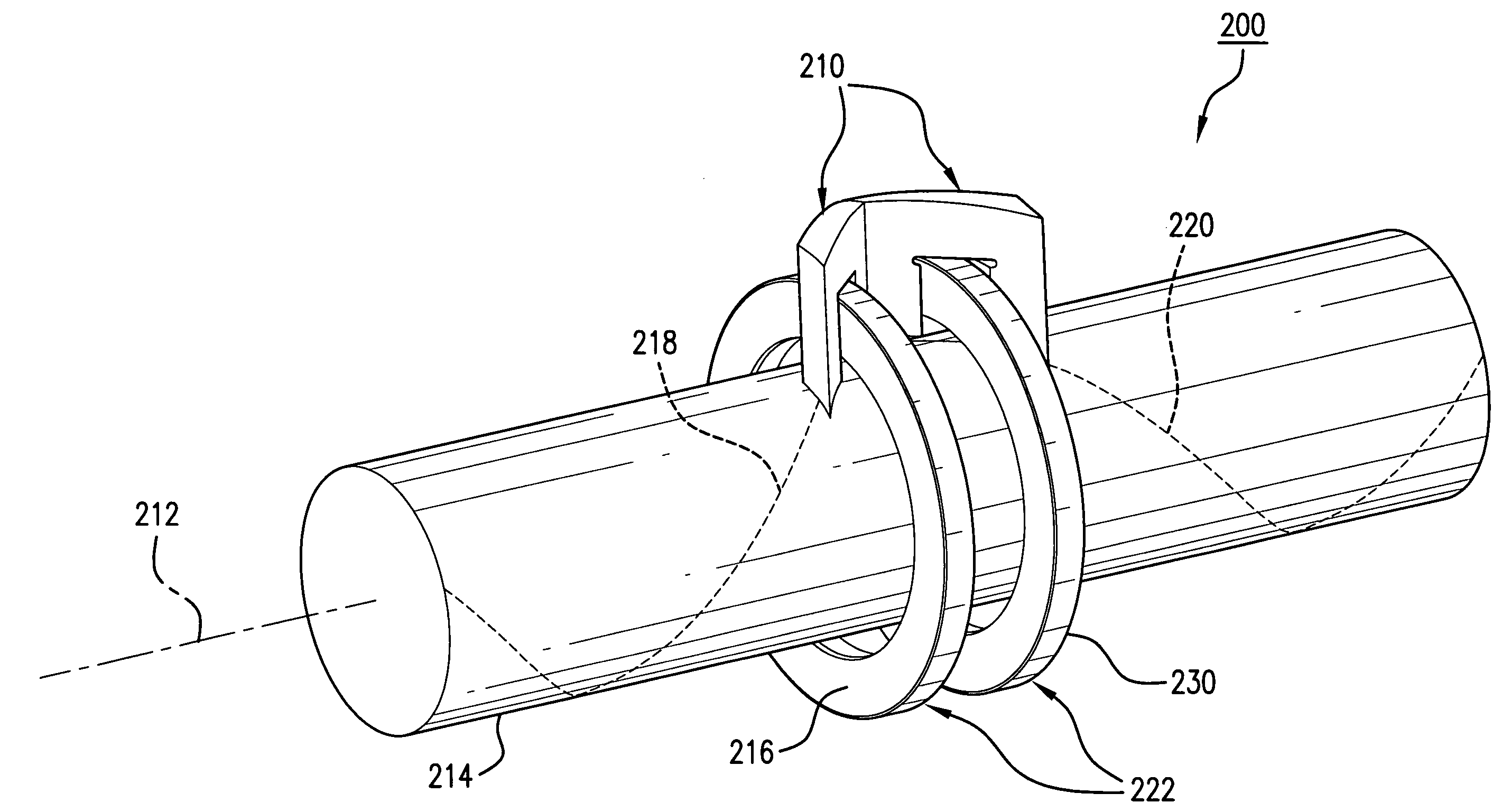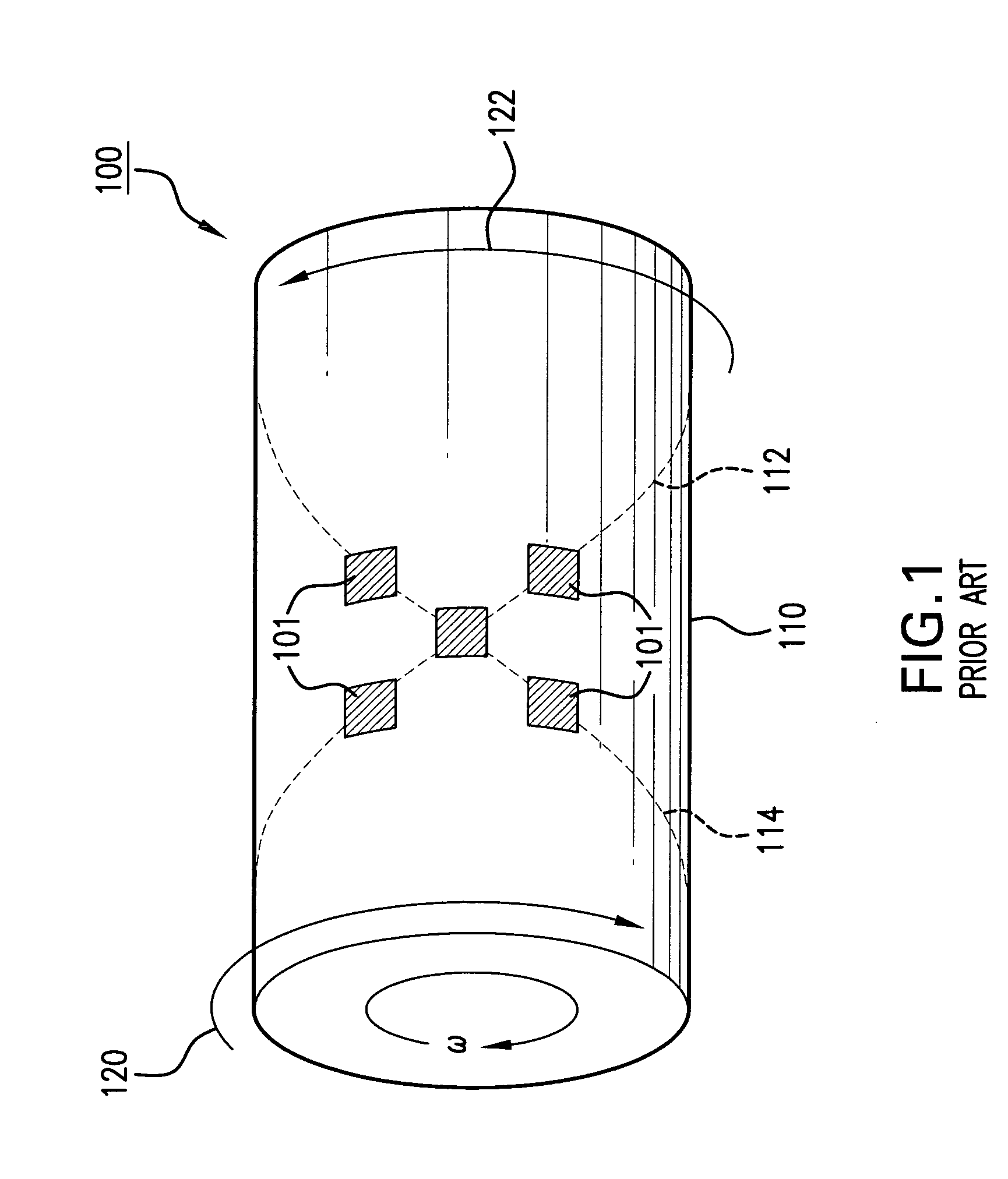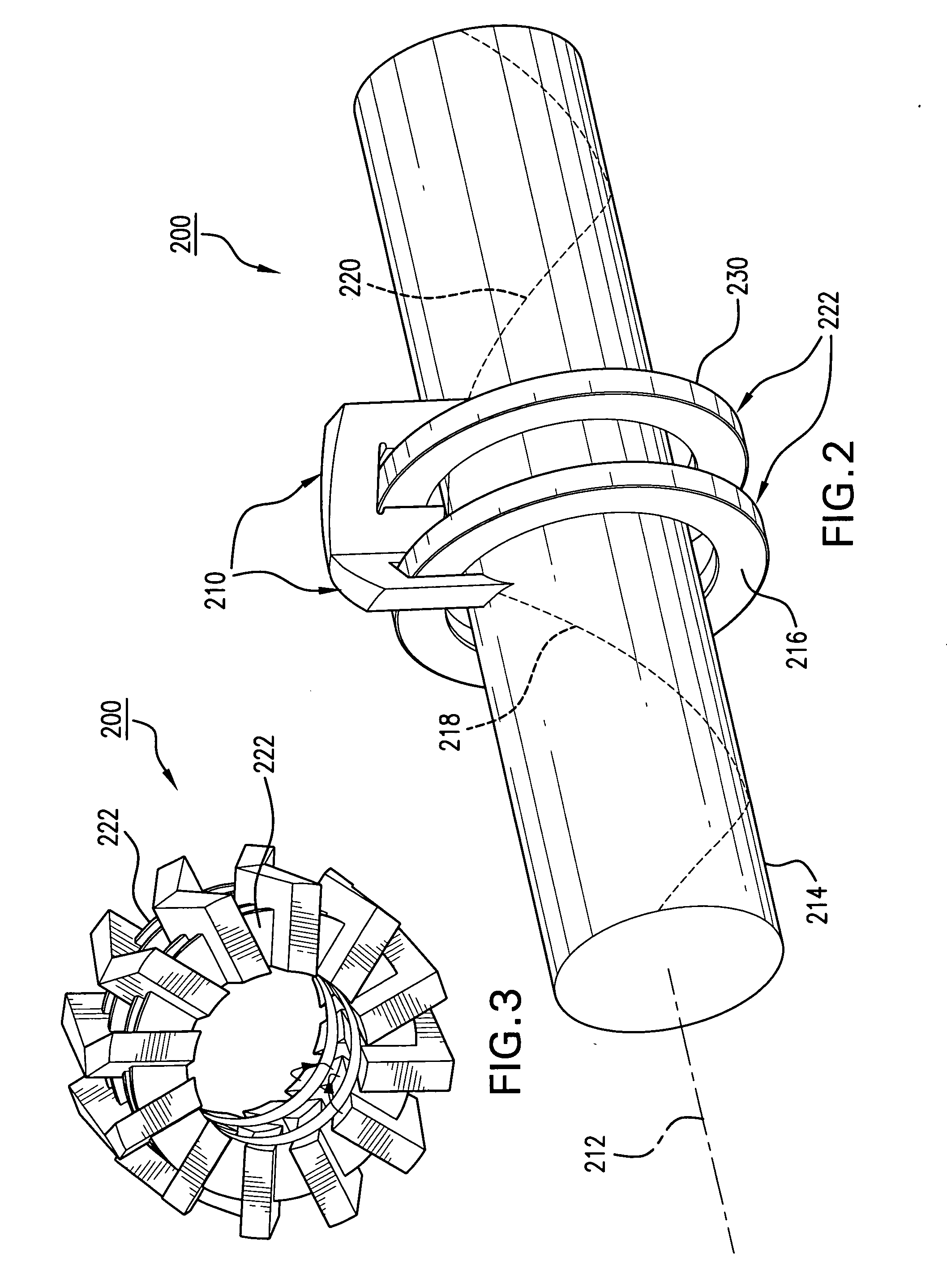Villari torque sensor excitation and pickup arrangement for magnetrostrictive shafts
a magnetrostrictive shaft and torque sensor technology, applied in the direction of instruments, work measurement, measurement devices, etc., can solve the problems of cost and complexity, measurement more sensitive to circumferential inhomogeneities, and the fabrication of sensing coils onto discrete poles of sensors becomes very difficult for small shaft diameters, etc., to achieve tighter requirements on axial play, cost and complexity, and cost
- Summary
- Abstract
- Description
- Claims
- Application Information
AI Technical Summary
Benefits of technology
Problems solved by technology
Method used
Image
Examples
Embodiment Construction
[0013]The inventions described and / or claimed herein are directed to various sensor arrangements having cylindrical excitation and sensing coils that can be used with shafts having a cylindrically uniform distribution of magnetostrictive material without any surface modifications such as chevrons, etc., that force flux along the principal axes.
[0014]FIG. 2 is a schematic diagram of a simple sensor arrangement illustrating a concept of the inventions described and / or claimed herein. A sensor 200 includes skewed sensor pole pieces 210 that straddle cylindrical coil bobbins 222. The sensor has a unique pole structure that forces flux along the principal axes. Discrete pole pieces 210 are skewed with respect to a shaft axis 212 of a shaft 214 and that straddle concentric excitation coils 216 and sensing coils 230, the excitation coils 216 and sensing coils 230 being wound on coil bobbins 222. Each bobbin contains one excitation coil and one sensing coil. One set of poles is aligned with...
PUM
| Property | Measurement | Unit |
|---|---|---|
| frequency | aaaaa | aaaaa |
| frequency | aaaaa | aaaaa |
| frequency | aaaaa | aaaaa |
Abstract
Description
Claims
Application Information
 Login to View More
Login to View More - R&D
- Intellectual Property
- Life Sciences
- Materials
- Tech Scout
- Unparalleled Data Quality
- Higher Quality Content
- 60% Fewer Hallucinations
Browse by: Latest US Patents, China's latest patents, Technical Efficacy Thesaurus, Application Domain, Technology Topic, Popular Technical Reports.
© 2025 PatSnap. All rights reserved.Legal|Privacy policy|Modern Slavery Act Transparency Statement|Sitemap|About US| Contact US: help@patsnap.com



